

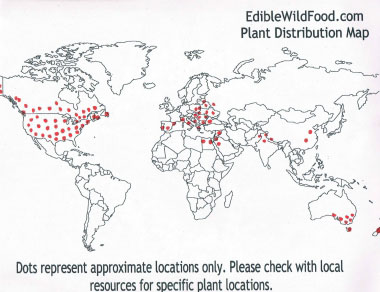
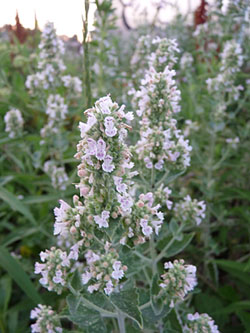
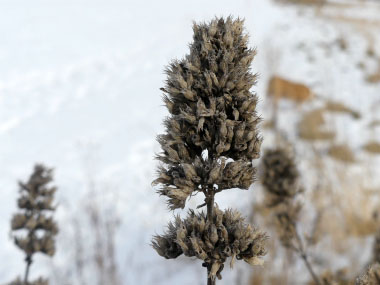
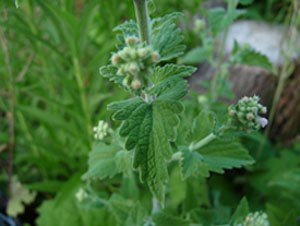
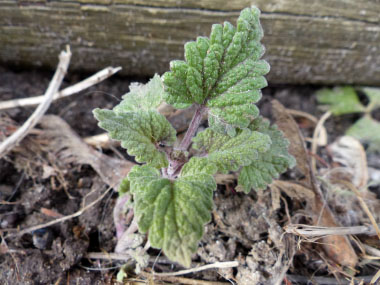


For comprehensive information (e.g. nutrition, health benefits, recipes, history, harvesting tips, etc.) please check out our Catnip PDF magazine.
Catnip is a perennial herb that is native to Europe and Asia but also grows throughout North America and Africa. Both the Latin name and scientific names are derived from the inability of cats to resist the aroma of this plant. Cats get frisky when they eat this plant yet humans find it relaxing. It has been used for centuries in herbal remedies and as a relaxing tea.
Distinguishing Features
Catnip is a whitish-gray plant with an aromatic minty odor. It is a hardy, upright, perennial herb with sturdy stems covered with very fine hairs. Catnip bears heart-shaped, grayish-green leaves.
Flowers
Catnip flowers are white or near white some having purple spots, are hermaphrodite and are pollinated by bees making this a plant that attracts wildlife. Tubular catnip flowers are arranged in dense whorls on spikes. The clusters of white or (pale lavender tubular flowers) bloom from July to October.
 Fields
of Nutrition has medicinal benefits and vitamin/mineral content of Catnip.
Fields
of Nutrition has medicinal benefits and vitamin/mineral content of Catnip.
Leaves
Catnip leaves are silvery/gray to an almost blue/green colour. The leaves are oblong to heart-shaped with finely-scalloped edges and are covered with a soft ‘down’. Whitish hairs grow on the lower side.
Height
Catnip grows to varying heights including up to one metre tall.
Habitat
Catnip likes sandy and loamy soils, preferring well-drained soil. It does not like shade and grows best open area, hedgerows, waste ground, near streams and border areas of fields. Many people choose to cultivate catnip. This plant thrives in soil with a pH range between 5 and 7.5.
Edible Parts
Young leaves can be eaten raw. Their mint-like flavour adds an aromatic flavouring in salads. Older leaves can be used as flavouring in cooked foods. Catnip leaves and flowers can be used fresh or dried to make a calming herbal tea. If making tea, it should be infused in a closed container in order to preserve the essential oils. Seeds and roots can also be used.
Other Name
Catmint.
Recipes
To support our efforts please browse our store (books with health benefits, etc.).
Winter Survival Food Handbook

PDF Plant Magazines
Types of Wild Food
Geographic Zones Seasons
Disclaimer
EdibleWildFood.com is informational in nature. While we strive to be 100% accurate, it is solely up to the reader to ensure proper plant identification. Some wild plants are poisonous or can have serious adverse health effects.
We are not health professionals, medical doctors, nor are we nutritionists. It is up to the reader to verify nutritional information and health benefits with qualified professionals for all edible plants listed in this web site. Please click here for more information.
Why Edible Wild Food?
- Food costs are rising
- Free, wild food is readily abundant
- Wild food adds nutrition to your diet
- Wild food can help treat various medical conditions





